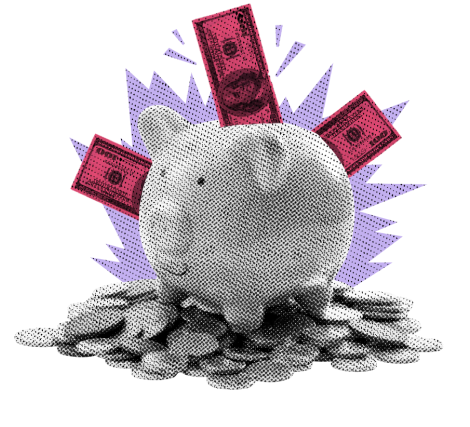Thin air. Stocks rose on Friday, powered forward by continued momentum from the Fed’s new policy and progress in tackling the pandemic. The dollar is weakening and the yield curve is steepening - who said that no one listens to the Fed?
N O T E W O R T H Y
Lead shoes are in the news.
The Fed is eager to send us a message. “We are here for you, really!” But why are they here for us? Well, it is their job. I wrote about it last week but would like to discuss it a bit further. Remember that the Fed has a duel mandate. That means that they are responsible for keeping inflation under control and employment healthy, with the latter a sort-of new addition. Clearly, inflation has been the Fed’s primary focus historically, but last week that appeared to change as the Chairman indicated a shift in emphasis on employment. Last week I talked about the trade-off between high employment and high inflation. Historically, the trade-off was quite clear, but many things have changed since the 1970’s which was the last time the US contended with what we would consider run-away inflation. In today's economy, companies off-shore high-cost manufacturing labor, are less subject to strong labor unions, and rely heavily on technology to make employees more productive. High employment historically led to higher wages, which led to increased production costs, which ultimately led companies to raise prices out of necessity. The aforementioned changes in labor economics have weakened the correlation between employment and inflation. It is one of the key reasons that unemployment, before the pandemic, was at a 60-year low while inflation remained stubbornly below the Fed’s 2% target. That is precisely why the Fed has decided to worry less about inflation and focus more on getting unemployment back down to normal. Aside from all of the emergency lending programs and asset purchase programs, the primary tool employed by the Fed is interest rate policy. The very first thing the Fed did in response to the recent economic pullback was to rapidly ratchet down already-low interest rates. Since then, the Central Bank has been very clear that we can expect low rates for a long time… at least until unemployment gets back down to normal.
Speaking of low interest rates, last week, I noted that low rates were a factor in causing stock prices to go up. One of my regular readers wrote in and noted that low rates were not good for bank stocks, and I would like to clarify that. First, on stocks in general. Low interest rates means lower cost of borrowing for companies which increases investment and lowers operational costs. When analysts utilize cash flow discount models, generally speaking, lower interest rates mean higher valuations, as the rates are used to discount future cash flows. To learn more about exactly how lower rates contribute to higher stock valuations, refer to my note on the topic here: https://siebert.com/blog/wp-content/uploads/2019/04/geek-out-topic-Stock-Valuation-1.pdf . Finally, lower rates put investors in search of yields in a tough spot. Lower yields on bonds force investors to seek out higher return potential in equities, and the shift in funds causes stocks to advance. But now on to the very specific effects of low interest rates on the banking industry. While it is true that banks like higher interest rates in order to charge more interest on loans, it is important to recognize that high interest rates don’t always guarantee high profitability in lending. What is most critical to a bank is its lending margin. Simply put, that is the return the bank makes on loans minus the interest rates a bank must pay to borrow money. Generally speaking, banks borrow short term money and lend it out long-term. For example, a bank will borrow money from consumers in time deposits and CD’s and lend out that same money in mortgages. Short-term interest rates are controlled by the Fed through policy and open market operations, so when the Fed adopts a NIRP policy (Near-zero Interest Rate Policy) they effectively make bank borrowing very cheap. Longer term interest rates are determined by the markets. When investors believe that the economy will do well in the future, they sell bonds pushing yields higher. The higher yields compensate for the expected inflation that comes with a healthy economy. Mortgage rates are tied to longer term bond yields, so when bond prices go down and yields go up, so do mortgage rates… generally speaking. So banks like it when short term rates are low and longer term rates are high. Starting in 2017 the yield curve began to flatten as many investors began to perceive economic trouble on the horizon. The rally in bonds led to lower long-term yields causing the yield curve to flatten. This flattening was occurring even as the Fed was raising interest rates. The flat yield curve was the primary reason for bank stocks' underperformance from early 2017 through late last year. If you were watching the industry, you would note that banking stocks rallied from October of last year through year-end and that the rally coincided with the yield curve steepening that started at the same time. Currently banks are under pressure due to the health of their loan portfolios which has been affected by the economic downturn. Last week’s revelation that the Fed is going to allow inflation to grow sent longer-term bond yields higher, steepening the yield curve… and wouldn’t you know it, bank stocks rallied on the news.
THE MARKETS
Stocks rallied on Friday on the positive momentum from earlier in the week. The S&P500 rose by +0.67% to its 20th high of 2020, the Dow Jones Industrial Average traded up by +0.57% (now slightly positive for the year), the Russell 2000 Index climbed by +0.88%, and the Nasdaq Composite hit its 40th new high of the year adding +0.60%. Bonds rose and 10-year treasury yields slipped by -3 basis points to 0.72%.
NXT UP
- Dallas Fed Manufacturing Activity (Aug) is expected to be 0.0, up from July’s -3.0.
- Fed Vice Chair Richard Clarida and Atlanta Fed President Raphael Bostic will speak today.
- The week ahead will feature a light earnings calendar as the season has wound down. We will also get PMIs, Fed Beige Book, Construction Spending, ADP Employment Change, Change In Nonfarm Payrolls, and the Unemployment Rate. Please refer to the attached earnings and economic calendars for details.
.png)

